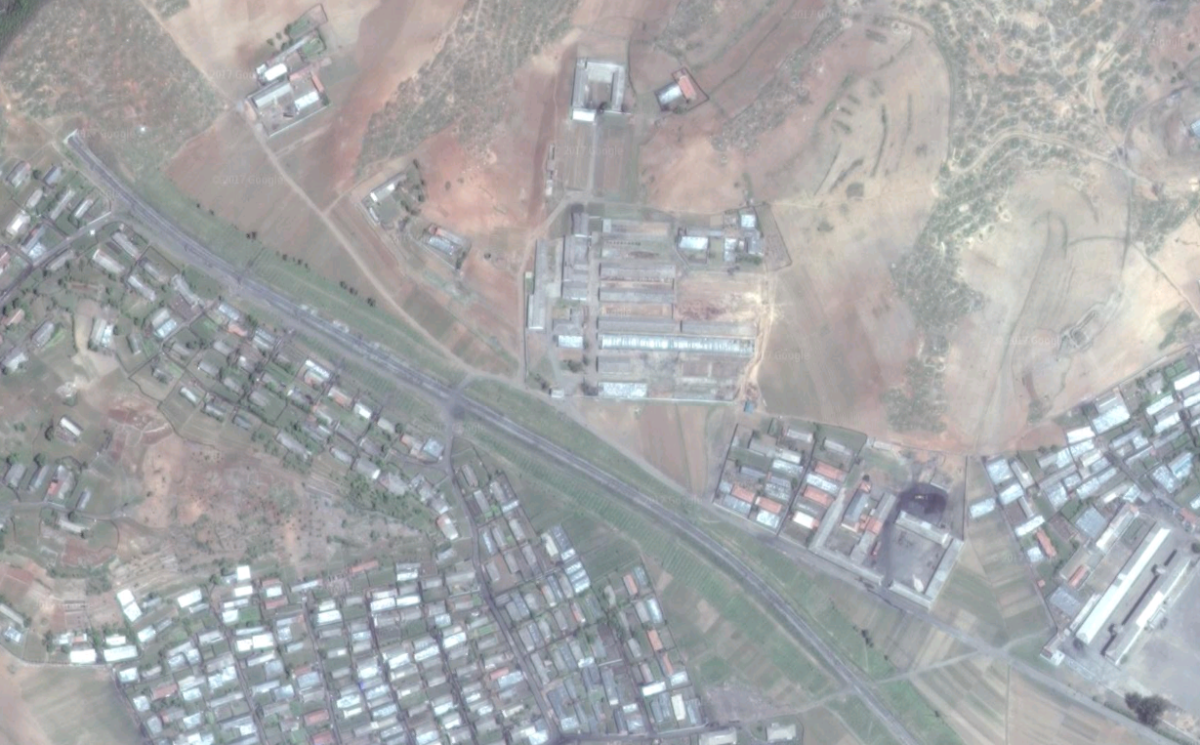
Updated | North Korea's pursuit of a missile capable of reaching the U.S. caused accidents along the way, The Diplomat reported Wednesday, referring to a missile test failure in April 2017.
At the time, the regime was busy testing an intermediate-range ballistic missile (IRBM) named Hwasong-12 capable of reaching the U.S. territory of Guam. It was first displayed at a parade on April 15, even before it could be tested successfully.
On April 29, North Korea conducted a third test launch of the Hwasong-12 from the Pukchang airfield in the South Pyongan province, about 45 miles north of the country's capital, a new location, as the missile had previously been test-launched—unsuccessfully—twice before that month from a site near the port city of Sinpo, on the northeastern coast.
Read more: Why Kim Jong Un's birthday is just like any other day in North Korea
The April 29 launch was also unsuccessful due to engine failure, reaching only about 44 miles in maximum altitude before crashing back to Earth. The location of the crash was previously unknown, but a U.S. government source told The Diplomat that the missile came down in the city of Tokchon, located approximately 40 miles northeast of the airfield.

Satellite images from Google Earth and PlanetLabs published in The Diplomat appear to corroborate the source, showing damage from debris in a building complex located near a large group of other buildings. From the images alone, it is impossible to verify if any casualties resulted from the missile crash.
North Korea would eventually claim to have successfully tested the Hwasong-12 following another launch on May 14, when the missile flew 430 miles, reaching an altitude of more than 1,245 miles before landing in the sea, 60 miles south of Russia's Vladivostok region.
North Korea used key components of the Hwasong-12 to develop the intercontinental ballistic missile (ICBM) Hwasong-14, successfully test-launched twice in July, and the Hwasong-15 in November, putting the whole of the U.S. mainland within the rocket's reach.
But the Hwasong-12 appears to be one of the most reliable missiles in Pyongyang's arsenal. Not only was the IRBM the weapon of choice in Kim Jong Un's threat to strike Guam in August, but the Hwasong-12 was then launched twice again in 2017.
The missile launches occurred within three weeks of one another, on August 28 and September 14, from two different locations, but both times flying over the northern Japanese island of Hokkaido before crashing into the Pacific Ocean. With each launch, the missile flew for a longer time, covering greater distance and reaching a higher altitude than before, showing just how quickly the country's missile development program has advanced.
North Korea has not conducted any missile launch since the Hwasong-15 test in November. Contradicting U.S. reports, the South Korean military said there were no signs another missile test was "imminent" at a press briefing on Thursday.
This article was updated with additional information about North Korea's recent missile tests.
Uncommon Knowledge
Newsweek is committed to challenging conventional wisdom and finding connections in the search for common ground.
Newsweek is committed to challenging conventional wisdom and finding connections in the search for common ground.
About the writer
Sofia Lotto Persio reports mainly on Asia and gender issues for Newsweek. She previously covered international affairs with a specific ... Read more
To read how Newsweek uses AI as a newsroom tool, Click here.








